
A long time ago and in a land just down the road, my husband asked me to type up his Master’s Thesis. I was faster at typing than he was, so I agreed. What an interesting venture THAT was! So many words that were unfamiliar to me, but that made perfect sense to him. You see he was getting his Masters in Aquatic Entomology. Of course I knew that entomology had to do with insects. Hadn’t we spent numerous weekends at Otter Creek with a white sheet and a flashlight making observations and noting the adult caddisfly species inhabiting the area? Hadn’t I also gone with him as he collected caddisfly larva from the same creek that he would later identify to species? Hadn’t I been to his lab at UW-Madison often enough and checked out the artificial creek in which he was raising caddisflies? Of course I had. But when I typed up his thesis, I became fascinated with something other than the caddisflies. I became fascinated with the scientific names of the insects he was writing about. Each had a name that was either Latinate or Hellenic. And because the names were from Latin and Greek, they carried meaning which helped me understand something about the insect named. At that point, I was years away from understanding that ALL words have a spelling that specifically represents their meaning. Back then it made scientific terms seem magical.
Today my husband forwarded an article about Carl Linnaeus. He was a naturalist who lived from 1707-1778. He created a system for naming, ranking, and classifying organisms that is still in use today. Here is a link to the article. I enjoyed many interesting things about this article, but one of my favorites was his reason for wanting to describe all living organisms with a two word name (binomial nomenclature). The example given in the article is that of the European honeybee. Before 1758, it was known as the Apis pubescens, thorace subgriseo, abdomine fusco, pedibus posticis glabris utrinque margine ciliatis. The article roughly translates that Latin to “furry bee, grayish thorax, brownish abdomen, black legs smooth with hair on both sides.” While quite detailed and helpful in describing one species from another, it was very cumbersome to remember or write down. Thanks to Carl Linnaeus, the European honeybee is now known as Apis mellifera “honey-bearing bee.”
I encourage you to watch this short video about him and his scientific contributions.
Long before my husband’s thesis was ready to be typed, I was hearing the scientific names of many insects. As part of his Masters coursework he prepared a prodigious insect collection. I remember that we carried collection jars wherever we went! In this post I will focus on the some of the Order names I became familiar with during that time period. The levels of classification are Kingdom, Phylum, Class, Order, Family, Genus, Species. What caught my attention with the Order names was the consistent use of the element <ptera>.
I was fascinated that caddisflies were part of the larger Order known as Trichoptera. At the time I was told it meant “hairy winged.” Now I know that <trich> had a Hellenic ancestor, τριχίνος (transcribed as trichinos) meaning “of hair” and <pter> is from Greek pteron and means “winged.” The Caddisflies in this Order are often confused with moths in the Lepidoptera Order. They are confused because they are similar in size and color to many moths, but upon a closer look (and because of what is revealed in the name Lepidoptera), one can see a major difference. You see, Lepidoptera is also a compound word with one element deriving from Hellenic λεπιδος (transcribed as lepidos) “a scale” and the other from Hellenic πτερόν (transcribed as pteron) “winged.”
This is an adult caddisfly, Order Trichoptera “hairy winged.”
This is a Brown House-moth, Order Lepidoptera “scaley winged.”

]
Some of the other Orders of insects I learned about while typing my husband’s thesis were Hemiptera, Hymenoptera, Diptera, Siphonaptera, and Megaloptera. There were others, of course, but looking at even these few will unlock your understanding of scientific names used in classification.
As I was looking up more information about the Order Hemiptera, which is from ἠμί (transcribed as hemi) “half” and πτερόν (transcribed as pteron) “winged,” I found out that historically, the Order Hemiptera was split into two suborders. The first was Heteroptera. Its first element is from ἑτεροειδής (transcribed as heteroeidēs) “of another kind” and its second element is πτερόν (transcribed as pteron) “winged.” The second Suborder was Homoptera, whose first element is from ὁμοείδεια (transcribed as homoeideia) “sameness of nature or form” and its second element is πτερόν (transcribed as pteron) “winged.”
From that we can note that insects in the Order Hemiptera are half winged. That doesn’t mean that their wings are halved in some way. It means instead that if they are in the Suborder Heteroptera, one pair of their wings has a tough and leathery upper half with a membranous tip and the other pair of their wings is strictly membranous. You might say that of their two sets of wings, one set is “of another kind.” If they are in the Suborder Homoptera, both of their wing pairs share a “sameness of form.” Their forewings can either be toughened or membranous, but not both.
This is one of the insects classified as a Heteroptera. You can see both the membranous wing and the leathery wing.

This is an aphid, one of the insects classified as a Homoptera. You can see that both pair of wings are the same. They are membranous.
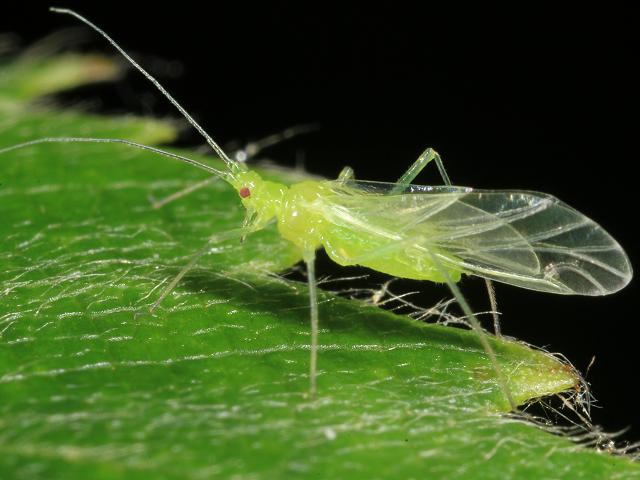
Now let’s find out about the name for the Order of insects known as Hymenoptera. Are you making guesses as to this word’s meaning at this point? In looking at the Greek-English Lexicon by Liddell and Scott, I actually found the full word ὑμενόπτερος (transcribed as hymenopteros) “membrane winged.” This group includes wasps, bees, and ants. One thing to note about their wings is that the front set is bigger than the back set.
Here is a picture of a Tawny Mining Bee. I chose this picture so you can see the smaller second set of wings.
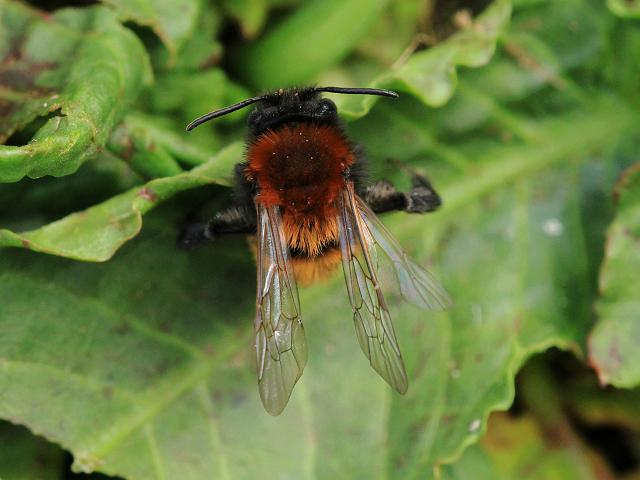
Let’s move on to the order known as Diptera. Think about what the word sum will be. We now know the second element in this word. What’s left? It would have to be <di + pter + a –> diptera>. So far all of the elements in all of the words we have looked at have been Hellenic (Greek in origin). The English base <di> is derived from the Greek word δοιοί (transcribed as doioi) “two.” This group of insects includes flies, mosquitoes, gnats and more. These insects belong in this Order because of the characteristic stated in the denotation of their name. They have just two wings.
Here is a picture of a Green Bottle Fly. You can see the two wings.
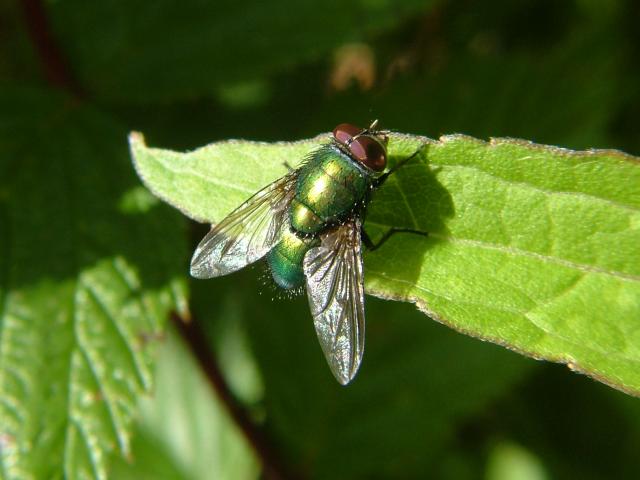
Next let’s look at the Order Megaloptera. Do you have any guesses about this word? The second element is the same in all of the words we’ve looked at, so the first element will no doubt be describing the wings on the insects in this order. Searching in Liddell and Scott, the first element is derived from μεγάλον (transcribed as megalon) “big, great.” If you guessed that this order of insects includes those with big or great wings, you can pat yourself on the back! Some of the insects we find in the Order Megaloptera are alderflies, dobsonflies, and fishflies.
Here is a picture of a dobsonfly. Its wings are obviously larger than any others we have looked at today.
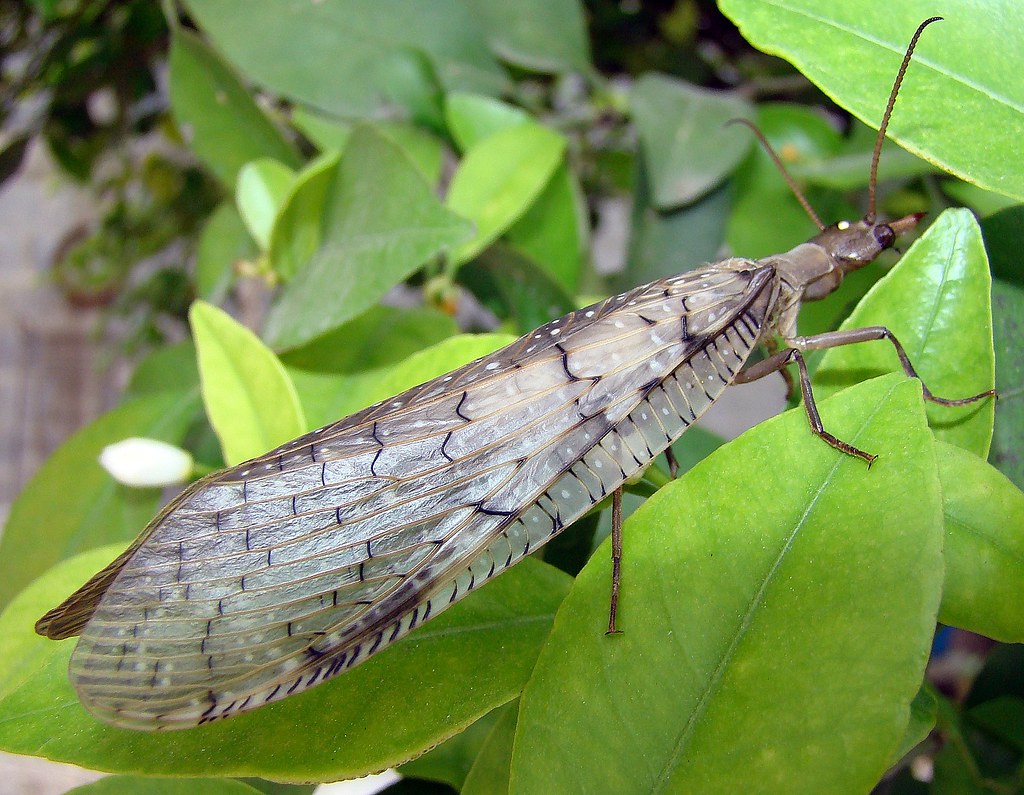
The last Order we’ll look at here is Siphonaptera. There are things about this word that are similar to the ones we’ve already looked at, and yet there’s something new to notice. First off, we see the now familiar element <pter> “winged.” What will the rest of this word reveal? Well, I found σίφων (transcribed as siphon) “tube, pipe.” That leaves us with that curious letter <a> between the first element and the second. That is a negativizing <a> that is a modern prefix to <pter>. In this case, insects in the Order Siphonaptera are without wings! They have no wings! But what their name reveals to us is that they have mouthparts that are tube-like for sucking. You guessed it. The insects we find in this Order are fleas! They stay alive by feeding on the blood of their host.
In this picture of a flea, you will notice there are no wings. The tubes for sucking are hanging down near the mouth on the far left.

There are, of course, many other Orders of insects. We could keep making sense of their names for quite a long time! What is an especially interesting find in the few we HAVE looked at is that Hellenic element <pter>. I wonder if you recognize it from words outside of this particular context. The most common word I can think of is helicopter. The word sum is <helic + o + pter –> helicopter>. The Hellenic base <helic> “spiral” and the Hellenic base <pter> “winged” are joined with the Hellenic connecting vowel <o>. Can you picture the blades of a helicopter and the way they move?
Another familiar word you may recognize is pterodactyl. You will notice that when this element is initial in a word, the <p> is unpronounced. The word sum is <pter + o + dactyl –> pterodactyl>. The Helenic base <pter> “winged” and the Hellenic base <dactyl> “finger” are joined with the connecting vowl <o>. Here is a picture of the pterodactyl. You can see the fingers.
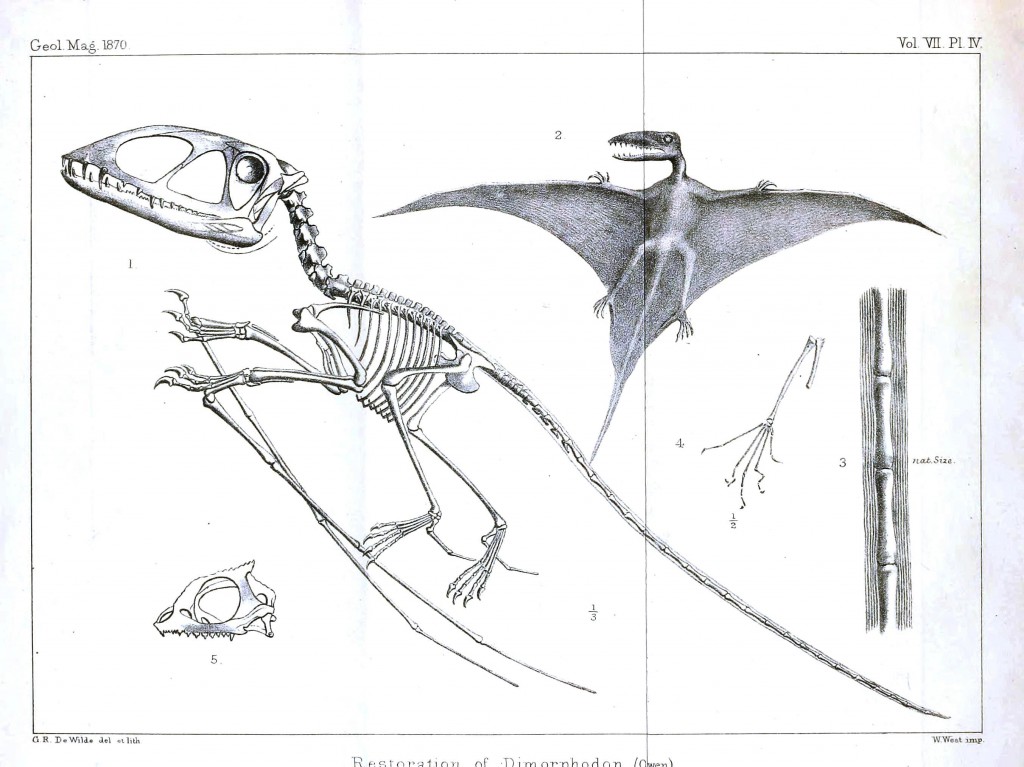
Pterodactyl (Dimorphodon macronyx) skeleton from Geological magazine (1864)
Entomology. The word itself has an interesting story. Using Etymonline, I found out it is from French entomologie, which was coined in 1764 from -logie “study of” and Greek entonom “insects.” Entonom is the neuter of entonomos “cut in pieces, cut up.” In this case, “cut” refers to the way an insect’s body is in segments and each segment is cut in or notched between the segments. The word sum is <en + tom + o + loge/ + y –> entomology>. The <en> prefix “in” is joined to the first base <tome/> “cut” which is joined to the second base <loge> “study, discourse” by the Hellenic connecting vowel <o> (which replaces the final non-syllabic <e>on the base). Finally the suffix <y> replaces the final non-syllabic <e> on the base <loge>.
Here is a drawing that clearly shows the segmenting of an insect’s body.
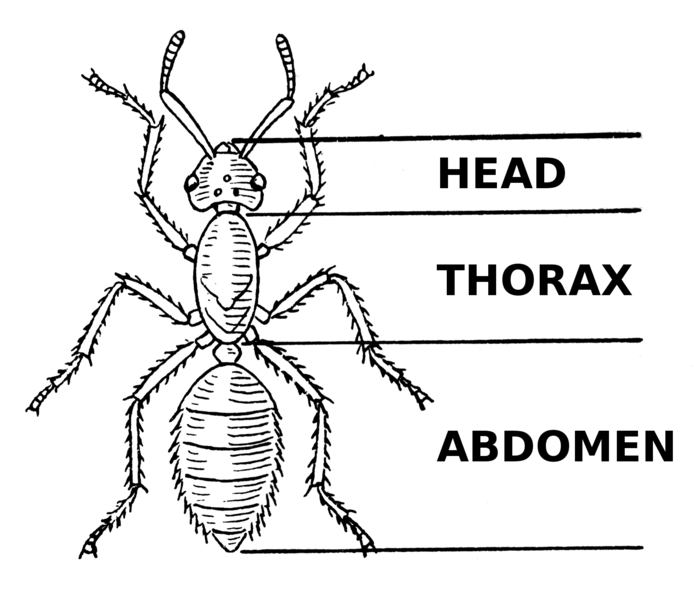
People who study science expect the words they use to represent meaning. It is one of the things I love about teaching science. The words we use in class as we are learning any science topic are ripe with meaning. They seem so unpronounceable and weird to the students because they have not been taught to look to parts of a word (morphemes) as parts of a meaningful structure. Syllable division steers students away from believing that spelling makes any sense at all. It misguides and makes them think a word’s spelling is not understandable, but it IS pronounceable. But that is the opposite of what is true. As you have seen with these seemingly difficult and nonsensical insect Order names, the spelling of a word – EVERY WORD – reveals to us a structure. Looking to understand the structure, we find the word’s story and begin to understand how and why the spelling of that word makes perfect sense. Once we understand the structure and the word’s etymology, we can understand the possibilities for pronunciation. As we noticed with the base <pter>, the pronunciation of this base is dependent on its placement in the word. That is just one example of what I meant when I said “possibilities for pronunciation.”
The amazing thing is that it isn’t just science words that are spelled to represent meaning. It is so hard for many to let go of the idea that spelling represents pronunciation. When thinking about how to spell a word, the strategy to “Sound it out” is so deeply ingrained. It is the only strategy many adults and children have been taught. That makes it feel right. But it is not. Your logical and reasoning brain will tell you that. So will all of these fascinating scientific names. If it is now obvious to you that the name for the insect Order Megaloptera makes sense, it’s time to look at other words that catch your eye. Look at math words and history words and guidance words and, well, all words. There are revelations waiting for you in every word you read!

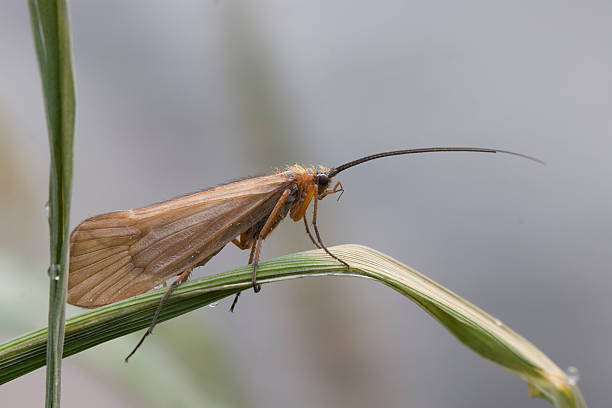
Bravo! I especially loved this part:
People who study science expect the words they use to represent meaning. It is one of the things I love about teaching science. The words we use in class as we are learning any science topic are ripe with meaning. They seem so unpronounceable and weird to the students because they have not been taught to look to parts of a word (morphemes) as parts of a meaningful structure. Syllable division steers students away from believing that spelling makes any sense at all. It misguides and makes them think a word’s spelling is not understandable, but it IS pronounceable. But that is the opposite of what is true.
So well stated, Mary Beth. I also was so impressed by your Greek spellings and the way you so clearly articulated your thinking. And I loved the photos. I went down a rabbit hole trying to understand the word “tawny” and when I learned it is related to “tan” like “to tan leather” it made perfect sense.
Thanks so much for your words!!
Thank you, Emily. I’d been once more stepping into the Transcribing Greek river when this opportunity to get better acquainted with my friends Liddell and Scott came along. It was just the thing to confirm and deepen some of my understandings.
Choosing just the right photo was not always easy. It was a learning experience in and of itself. In the end my husband was my final editor. I was confident I wasn’t misrepresenting the language, but I wanted also to make sure I wasn’t misrepresenting the insects!
Excellent! Mary Beth. I enjoyed every sentence, phrase and, certainly, word.
Thank you, Sara. It was an opportunity for me to make sense of something I only partially understood previously. I enjoyed writing it!
Thank you so much, Mary Beth, for making the commitment and taking the time to produce these eloquent and enlightening essays–of which this is an outstanding specimen! Your “possibilities for pronunciation” example is perfect!
Thank you, Rebecca. I enjoy considering which ideas and examples might more clearly illustrate the significance of structured word inquiry. When I read the article linked in my post, I knew immediately that an entomological connection might illustrate such a significance nicely.
Wow Mary Beth. What a beautiful journey you take us on with this post. We arrive at the same key understandings about orthography we’ve been studying for years — but the specific pathways through entomology and etymology has me arrive at that point with such a deeper understanding. I look forward to revisiting the journey in this post over and over. Thank you for all that you do!
Thank you, Pete. So much truth has been laid bare at my feet since I began this course of study. In writing this, I enjoyed revisiting a huge part of my life that I only sketchily understood before. Being able to explain what I know and to provide the evidence for it makes the look back new and incredibly interesting!
This is one of the best pieces I have ever read about real spelling, Mary Beth, in any domain. Thank you for this incredibly detailed and informative exposition!
Thank you, Gail. It is indeed an honor to receive such an accolade from one so respected!
I used several resources to verify my information, and in doing so found myself understanding so much more!